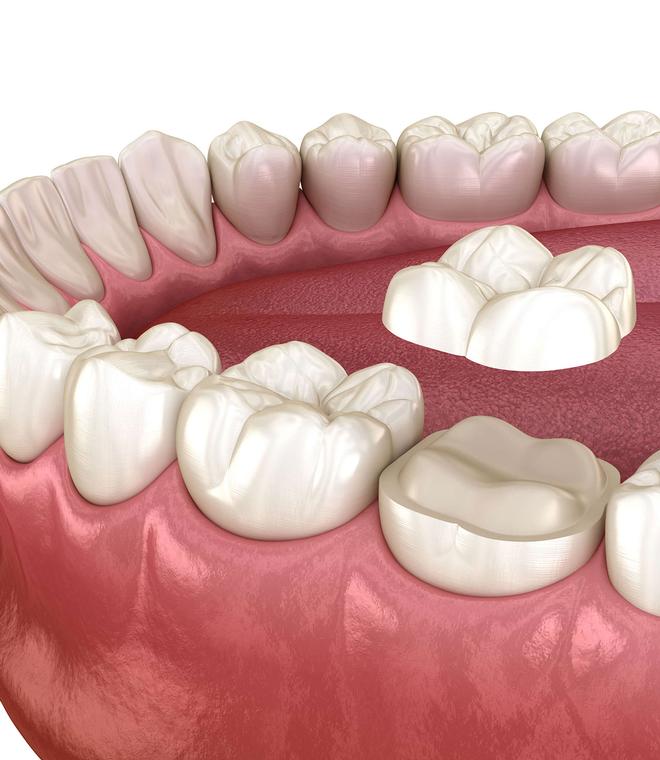When a tooth has extensive decay, but not enough to require a full-coverage crown, we turn to inlays and onlays (partial coverage restorations) to rebuild the integrity of the tooth. In the past, inlays and onlays were made of gold. Today, there are ceramic materials available that are just as durable as gold and yet are esthetically more pleasing.
Like crowns, partial coverage restorations are fabricated and usually bonded to your tooth. Inlays fit inside the grooves and fissures of a back tooth’s biting surface, while onlays cover more of the chewing surface (including the cusps(. Both are used to restore areas where tooth decay has been removed, and the tooth integrity has been compromised.
Partial coverage restorations
Partial coverage restorations typically require two appointments, as they are fabricated in our laboratory. During the initial visit, we prepare your tooth and take impressions to fabricate your custom restoration. The restorations are made of a pressed ceramic material and are bonded to your tooth at the second visit. These fillings are more natural-looking, resist staining better, are much stronger, and last longer than composite fillings. We recommend these types of restorations for most cases as they are more aesthetic, more durable over time, and preserve tooth structure.

The Advantages of Inlays and Onlays
- Esthetically Pleasing: Partial coverage restorations are made using a pressed ceramic material to best match the existing color of your teeth and feel just like a natural tooth.
- Durability: Inlays and onlays are fabricated from a structurally superior material (ceramic) than composite, which will protect and help retain the remaining portion of your tooth.
- Conservative: Partial coverage restorations are a more conservative option than full coverage crowns. Crowns require a complete preparation of your tooth, but only the decayed portion of a tooth is removed to accommodate a partial coverage restoration.
- Convenient: Inlays and onlays can be cleaned like your regular teeth with daily brushing and flossing. Also, they minimally impact the gingival tissue like a crown does.
Caring for Inlays and Onlays
It’s important that you carry out good oral hygiene habits, with regular dental hygiene visits and brushing for two minutes, twice a day, and flossing at night. Whenever you come to our office for a regular dental exam, we will examine your partial coverage restoration to make sure it’s solid and does not need replacement. Inlays and onlays are a very strong, long-lasting type of dental restoration. Replacement is not as often as bonded composite fillings, as most have a lifespan of over 20 years.
 Skip site navigation
Skip site navigation
